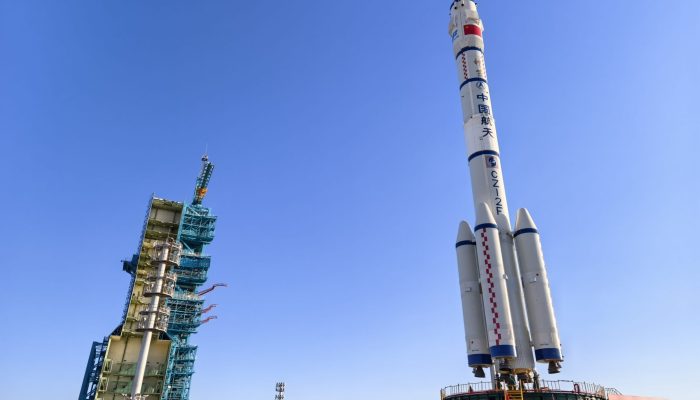China’s recent launch of Shenzhou 19, which carried three astronauts to the nation’s Tiangong space station, has marked a significant milestone in its rapidly expanding space program. The mission was declared a “complete success” by Beijing, highlighting the country’s commitment to establishing itself as a dominant force in space. This mission is notable for reaching orbit and symbolising China’s ambitions to challenge the United States in the new frontier of space exploration. The Shenzhou 19 mission embodies a combination of national pride, scientific advancement, and strategic rivalry, as China pushes forward with its goal of landing astronauts on the Moon by 2030.
A New Era of Chinese Spaceflight:
The Shenzhou 19 mission, launched from the Jiuquan Satellite Launch Center in Gansu Province, includes a groundbreaking crew featuring China’s youngest astronaut and its first female space engineer. The crew, widely celebrated across China, will remain in the Tiangong space station for six months, where they are set to conduct various experiments, spacewalks, and tasks critical to advancing China’s space capabilities. As China aims for the Moon, each mission to the Tiangong space station offers a crucial opportunity to gather experience in long-term space habitation and complex operations, putting Beijing in a position to fulfill its ambitious goals.
The launch was historic, with hundreds of people cheering as flames lit up the Gobi Desert during liftoff. The journey took over six hours, and the Shenzhou 19 successfully docked with the Tiangong station, where the astronauts of Shenzhou 18 welcomed the crew. This unique moment marked another achievement for China, as it demonstrated a smooth and precise handover between two crewed missions—a complex maneuver that showcases China’s growing confidence in its space infrastructure and technical expertise.
Beijing’s 2023 Record-Breaking Launches and Lunar Ambitions
This mission is one of 100 launches that China has planned for 2023, a record-breaking year as Beijing accelerates its quest to surpass other spacefaring nations. China accumulates invaluable experience with each mission and reinforces its position in the international space community. The scope of China’s ambitions can be traced back to President Xi Jinping’s 2021 declaration that developing the space industry and establishing China as a space power is the nation’s “eternal dream.”
While the United States remains the global leader in space exploration, with a legacy rooted in the Apollo missions and extensive partnerships through NASA, China’s swift progress has drawn increasing attention. Earlier this year, NASA Administrator Bill Nelson acknowledged that the US and China are effectively in a new space race, particularly in their ambitions to return to the Moon. Nelson expressed concerns that China’s activities in space may serve dual purposes, both civilian and military, as the Chinese space program is closely linked with the country’s armed forces. The US worries that China could eventually seek territorial claims or control resources on the lunar surface.
International Tensions and the Future of Space Exploration:
As China’s space program advances, the political and strategic implications of its success cannot be ignored. With each mission, China aims not only to demonstrate its technological prowess but also to reinforce its standing as a major player in the global arena. By focusing on large-scale, long-term projects like the Tiangong space station and lunar expeditions, China is sending a clear message that its space ambitions extend beyond scientific exploration to include national prestige and potential military advantage.
The United States and its allies are watching these developments closely, recognizing the potential implications of a powerful, technologically advanced rival in space. The next decade will likely see intensified efforts from both China and the United States to return to the Moon and establish a presence that could shape the future of space exploration. NASA’s Artemis program aims to bring American astronauts back to the lunar surface by 2025, while China aims to send taikonauts to the Moon by 2030. This timeline suggests that a new era of lunar exploration is imminent, with two superpowers vying for dominance.
Looking Ahead:
China’s Shenzhou 19 mission represents a milestone in the nation’s space journey. China is staking a severe claim of space with its commitment to Tiangong, frequent launches, and planned lunar missions. The mission has showcased the dedication of Chinese engineers, scientists, and astronauts and has reinforced China’s resolve to become a key player in this new era of space exploration. As both nations strive to push the boundaries of human capability and technology, the world will watch as China’s “eternal dream” unfolds, transforming space’s political, scientific, and strategic landscape.
As this competition continues, international cooperation, security concerns, and shared challenges will shape the trajectory of human exploration. For now, China’s successful mission marks another step toward a future where space is a domain of exploration, global rivalry, and potential collaboration.




